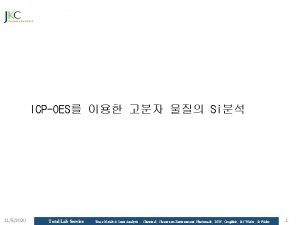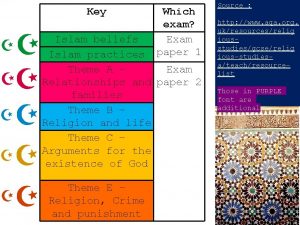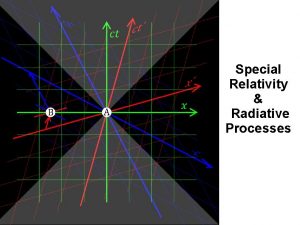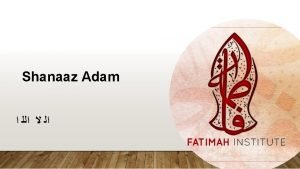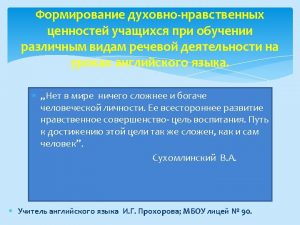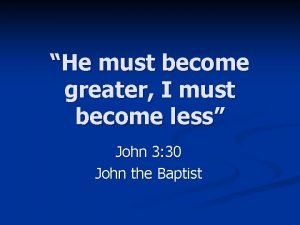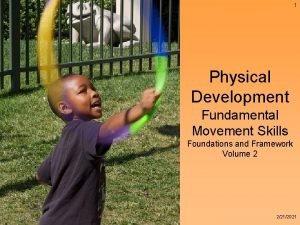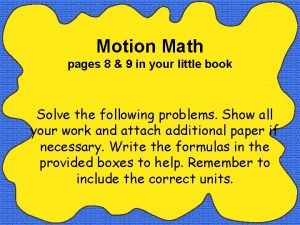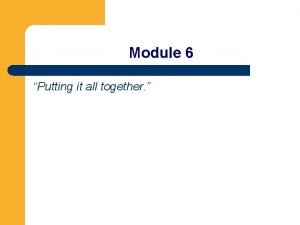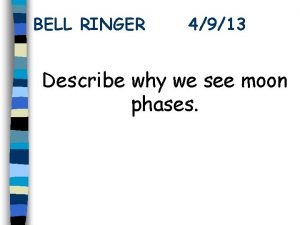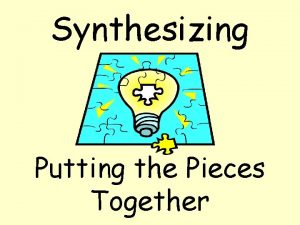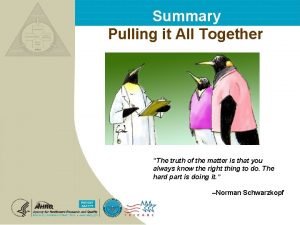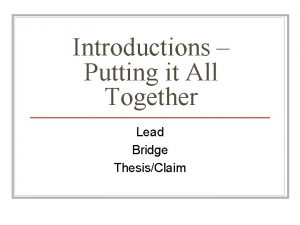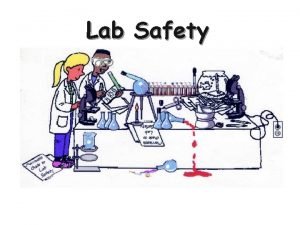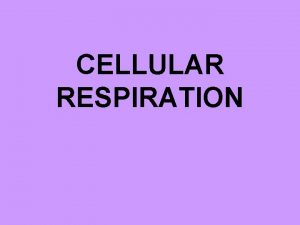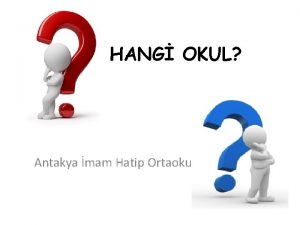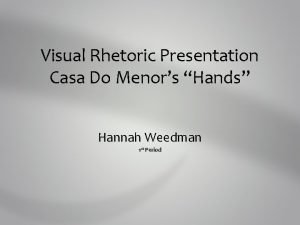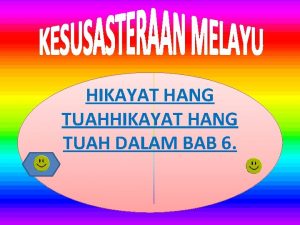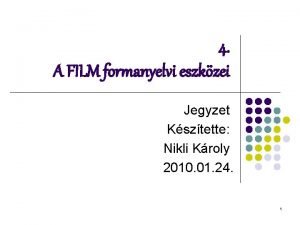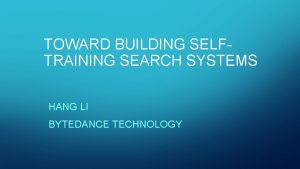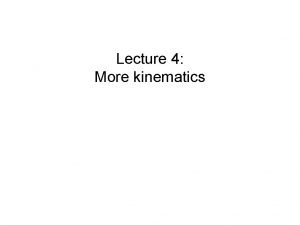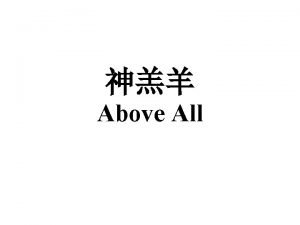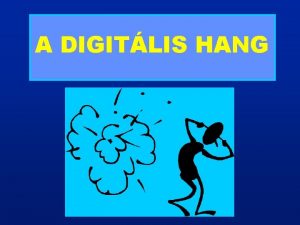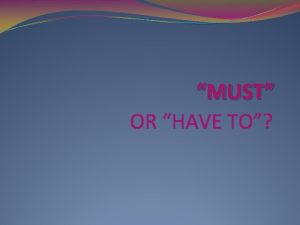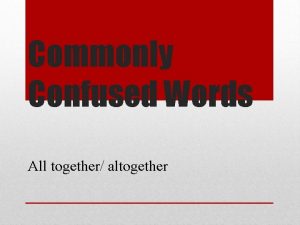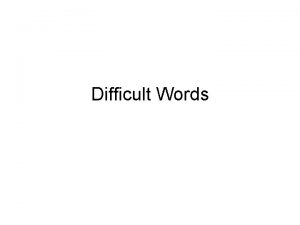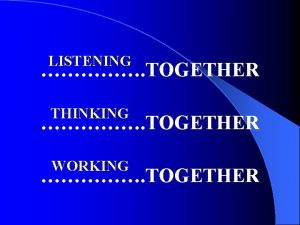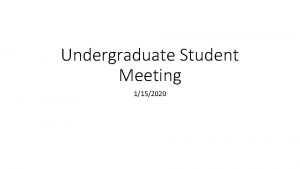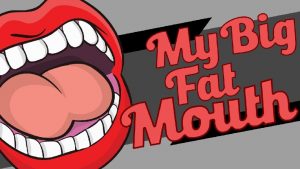1152020 We must indeed all hang together or




























































































- Slides: 92

11/5/2020 “We must indeed all hang together, or, most assuredly, we shall hang separately. ” --Benjamin Franklin (1708 -1790) remark at signing of Declaration of Independence, 4 July 1776. Introductory Sociology Instructor: Ed Brent Copyright (c) 2000, Edward Brent 1

11/5/2020 SOCIAL INTERACTION Introductory Sociology Instructor: Ablo Bah Copyright (c) 2016, Ablo 2

11/5/2020 OVERVIEW Social Structures How statuses and Roles Constrain Social Interaction: The Basis for Social Life Theoretical Perspectives Symbolic Interactionism The dramaturgical perspective Social Exchange Nonverbal behavior Forms of Social Interaction 3

11/5/2020 A Few Puzzles How do you decide who to spend time with? What do you expect from someone else when you interact with them? E. g. , what do you expect of a friend? What do you expect from a salesperson? What makes an interaction fair? How would that be different if the other person is someone who owes you a lot? How about if the other person was a movie star or celebrity? What about if you were interacting with a sick parent? 4

11/5/2020 Shooting an Elephant As a young man, George Orwell was an English police officer in what was then the English colony of Burma. One day an elephant got loose from its owner and killed a Burmese man. As the only policeman nearby, Orwell acquired an elephant rifle and began to walk toward him. As he did so, virtually the entire population of the little village came out of their huts to follow him. When he found the elephant it was grazing in a field eating peacefully. 5

11/5/2020 “I ought not to shoot him” “As soon as I saw the elephant I knew with perfect certainty that I ought not to shoot him. It is a serious matter to shoot a working elephant—it is comparable to destroying a huge and costly piece of machinery—and obviously one ought not to do it if it can possibly be avoided. . I decided that I would watch him for a little while to make sure that he did not turn savage again, and then go home. 6

11/5/2020 “I was only an absurd puppet” “But at that moment, I glanced around at the crowd that had followed me. . And suddenly I realized that I should have to shoot the elephant after all. The people expected it of me and I had got to do it; I could feel their two thousand wills pressing me forward, irresistibly. And it was at this moment, as I stood there with the rifle in my hands, that I first grasped the hollowness, the futility of the white man’s dominion in the East. Here was I, the white man with his gun, standing in front of the unarmed native crowd— seemingly the leading actor of the piece; but in reality I was only an absurd puppet pushed to and fro by the will of those yellow faces behind. 7

11/5/2020 “He wears a mask and his face grows to fit it” I perceived in this moment that when the white man turns tyrant it is his own freedom that he destroys. . For it is the condition of his rule that he shall spend his life in trying to impress the “natives, ” and so in every crisis he has got do what the “natives” expect of him. He wears a mask, and his face grows to fit it. . To come all that way, rifle in hand, with two thousand people marching at my heels, and then to trail feebly away, having done nothing—no, that was impossible. The crowd would laugh at me. And my whole life, every white man’s life in the East, was one long struggle not to be laughed at. . 8

11/5/2020 “to avoid looking a fool” “When I pulled the trigger I did not hear the bang or feel the kick…but I heard the devilish roar of glee that went up from the crowd. . And afterward I was very glad that the coolie had been killed; …it gave me sufficient pretext for shooting the elephant. I often wondered whether any of the others grasped that I had done it solely to avoid looking a fool. ” Orwell, George. 1950. Shooting an Elephant. In Orwell, G. Shooting an Elephant and Other Essays. New York: Harcourt Brace & Company. 9

11/5/2020 Social Interaction Issues What is the Right Thing to Do? What is fair? What is the situation? What is the shared “reality” that defines the interaction? Who decides this reality? Who are these people? How do their social statuses and roles influence the interaction? Who am I? 10

11/5/2020 SOCIAL STRUCTURES Social structure - regular patterns of social interaction and persistent social relationships E. g. , Normative structure - expectations attached to positions Occupational structure - distribution of people among social positions Stratification system - the distribution of social rewards Social structures link the individual to the broader society, simultaneously enabling and constraining them. CLAIM: Often social interaction is shaped more by social structures than it is by the individuals interacting. 11

11/5/2020 Q 1: Social Structures The behaviors associated with being a good employee are an example of _______. 1 - Normative Structure 2 - Occupational Structure 3 - Stratification System 12

11/5/2020 SOCIAL STRUCTURES Two of the most important social structures that affect social interaction are Social Statuses Social Roles 13

11/5/2020 Social Status A social status is a socially recognized position in a social system. Social status may be defined in many ways: by occupation, by education, by family position, by age, by race, by gender, and so on. 14

11/5/2020 Ascribed & Achieved Social Statuses An ascribed status is a status into which individuals are assigned without regard for their actions, desires, or abilities e. g. , male, female, young, old, black, white, son, daughter. An achieved status is a social status acquired through an individual's own actions e. g. , college student, married person, physician. 15

11/5/2020 Status Set status set A is the set of all statuses occupied by a person at the same time. 17

11/5/2020 Master Status A master status is a position so important it dominates all other statuses in the individual’s status set, for both the individual holding the status and others. E. g. , Professional athlete, President of the United States Stigmatized statuses are also often master statuses. E. g. , AIDS victim, paraplegic, or blind person Sometimes a person's master status changes. For example, Ken Lay went from respected corporate executive to convicted felon before dying of a heart attack. 18

11/5/2020 Manifest & Latent Statuses A manifest status is the status that defines or structures the role set for a particular situation. A latent status is any status formally defined as irrelevant to a situation and which should have no bearing on interaction. 19

11/5/2020 Examples of Manifest & Latent Statuses Amy is A. 35 years old B. female C. A physician Steve is D. 30 years old E. male F. A policeman What is The manifest status for Amy when she examines Steve for a physical in her office? Her status as a physician 20

11/5/2020 Q 3: Manifest & Latent Statuses Amy is A. 35 years old B. female C. A physician Steve is D. 30 years old E. male F. A policeman What is The manifest status for Steve when he stops Amy for speeding? 21

11/5/2020 Q 4: Manifest & Latent Statuses Amy is A. 35 years old B. female C. A physician Steve is D. 30 years old E. male F. A policeman What is The manifest status for Amy when she meets Steve in a singles bar? 22

11/5/2020 Statuses Connect Individuals and Social Structures A person's status set anchors them to overlapping organizations, institutions, and society as a whole. 23

11/5/2020 Social Statuses Provide Continuity & Change PROBLEM: How can organizations which exist through the people who are part of them outlive individuals? A university, for example, has no meaning without students, faculty, and staff. Yet the University of Missouri is over 150 years old. How can this be the same organization with totally different people? The answer lies in social statuses. Social statuses may continue to exist long after a particular individual is gone. Individuals may occupy different social statuses at different times. 24

11/5/2020 Social Statuses Permit A Division of Labor & Inequality Social statuses make possible a complex division of labor in which different people perform distinct tasks. Social statuses often determine the social rewards individuals receive in the form of wealth, prestige, and power--the elements of social stratification. 25

11/5/2020 Roles are Attached to Statuses A social role is a set of expectations for anyone occupying a particular social status. Role expectations may be for behaviors, attitudes, values, or beliefs. Roles are attached to social statuses, not to individuals. A mother is expected to care for her child, regardless of who she as an individual is. 26

11/5/2020 Q 5: Social Roles Which of the following is NOT an expected behavior for the social role of students? 1 - Arriving to class on time 2 - Studying for tests 3 - Paying tuition fees 4 - Giving a lecture to the class 27

11/5/2020 A Role Set role set is the set of all roles associated with a particular A social status. 28

11/5/2020 Role Performance & Role Making Role performance - actions by an individual occupying a social status based on their role. E. g. , a musician playing in a concert Roles can evolve over time and be changed by people. Role making - modifications or changes in roles as a result of individual action by people occupying those roles (Ralph Turner, 1962) When Bill Clinton, played the saxophone on a late-night talk show, this extended the boundaries of what we regard as normal and acceptable behavior for candidates for the office of President of the United States. 29

11/5/2020 Role Conflict, Role Strain, and Role Segregation Role strain – difficulties meeting the expectations of a single role. E. g. , a father may be unable to support his family financially. Role conflict - when different roles have incompatible expectations E. g. , parent and teacher Role segregation - avoid statuses invoking incompatible roles for the same role partner E. g. , teachers avoid romantic involvement with students. 30

11/5/2020 Q 6: Role Conflict, Role Strain, and Role Segregation Suppose that you had to appear in the court of law as a witness for prosecution. However, on the same day and time that you are to appear court you also have this class. This would be an example what? 1 - Role Conflict 2 - Role Strain 3 - Role Segregation 4 - None of the above 31

11/5/2020 Role Distancing Role distance - a separation of one’s self from the role one must play. It is a strategy to separate identity from action. E. g. , a mother giving her child medicine she knows the child does not like might say “this will hurt me more than it hurts you. ” E. g. , when a person “has an attitude. ” Manual laborers performing their job with no enthusiasm Medical workers in the operating room cracking jokes and looking disinterested during the operation 32

11/5/2020 Q 9: How does Role Distance Differ from Role Segregation? A policeman tells a motorist “I have no choice but to arrest you because your blood alcohol content is over the legal limit. ” This is an example of 1 - Role distance 2 - Role segregation 33

11/5/2020 Roles Make Life Manageable predict the behaviors of others - e. g. , students can predict that most teachers will give tests provide expectations for how you should act e. g. , students should try not to snore loudly during lectures. generalize behavior from one setting to another e. g. , classroom behavior in college similar to high school 34

11/5/2020 Roles Can Limit Behavior Can oversimplify behavior, encouraging routinized responses instead of thoughtful initiative E. g. , students may take notes and look attentive even when they don’t understand the lecture rather than asking insightful questions to help the teacher get the point across. May encourage relating to people based on stereotypes E. g. , parents may relate to children as children and overlook their distinctive differences as human beings. 35

11/5/2020 Stereotypes and Latent Statuses Stereotypes - generalizations about a category of people asserting they have a particular set of characteristics and not taking into account their individual differences. Usually stereotypes are incorrect, inflexible, and unfair. Stereotypes are often based on latent statuses of gender, race and ethnicity. Living up (or more likely “down”) to these expectations can be a survival strategy in social interaction that lets these stereotypes define the situation as seen by the other person but only feigned by the actor. 36

11/5/2020 “Movidas” Sociologist, Reyes Ramos (1990) reports how Mexican Americans sometimes avoid openly challenging Anglo stereotypes of Hispanics to smooth the interaction. A father of a fourth grade student is called to school to speak with the principal about a window his son had broken. While talking to the principal, the father “appeared to be both nervous and stupid. ” He appeared to not understand the situation well and spoke in broken English. Yet Ramos had seen him interact very competently with a city councilman on another occasion. When he asked the father what was going on, he replied, “Oh, I was pulling a movida. . I came on like the dumb Mexican, all lost and confused. You know how that guy thinks of us most of the time. Besides, had I come on straight, he might have held me responsible for the window Freddy broke. ” 37

11/5/2020 “Being Black. . . ” Brent Staples (1992), a black man, while a graduate student at the University of Chicago, found whites feared him based on their stereotypes of young black men. They would cross the street to avoid him on sidewalks, lock their car doors when he crosses in front of a car stopped at an intersection, even run from him should he walk too closely behind someone in the dark. 38

11/5/2020 “. . . and Being Feared” He eventually changed his behavior to counteract this stereotype. He gives people wide berth on subway platforms He doesn’t enter lobbies of buildings too quickly after other people so they won’t fear he is following them He even whistles melodies from classical composers to help dispel other people’s mistaken image of him as someone to be feared. 39

11/5/2020 Self-Fulfilling Prophecies & Stereotypes Self-fulfilling prophecy—an assumption that, once having been made, leads to the predicted event occurring. Stereotypes Self-fulfilling prophecy? How do we separate this self-fulfilling prophecy effect from real differences that might describe a category of people? Mark Snyder (1977) creates a study that does just this. 40

11/5/2020 Q 11: Stereotypes Do you feel that stereotypes become self-fulfilling prophecies? 1 - Usually/often 2 - Sometimes 3 - Rarely 4 - Never 41

11/5/2020 Q 12: Physical Attractiveness True or False: Physical attractiveness dramatically influences others’ assessments, evaluations, and reactions. 1 - True 2 - False 42

11/5/2020 Snyder (1977) Tested the impact of physical attractiveness of one person on the perception of them by others and the way others treat them 51 male-female dyads (undergraduate students at the U. of Minnesota) talked over a telephone with strangers they could not see The men were shown a picture said to be of their female partner before the interaction began Actually the men were randomly assigned photographs of either a physically attractive or physically unattractive female 43

11/5/2020 The Study Design Men’s first impressions measured before interacting ten-minute unstructured conversation statements recorded on separate audio channels twelve judges rated females by listening to just her statements Nine judges rated males based on his statements Judges did not know hypothesis or condition (doubleblind) 44

11/5/2020 Results Men formed their initial impressions based on general stereotypes associating physical attractiveness with socially desirable personality characteristics. Attractive females more cordial, poised, socially adept, and humorous Unattractive females more awkward, serious, withdrawn, and socially inept. The men also treated the women differently. (based on judges) “attractive photo condition” men acted more cordial, sexually warm, bold, outgoing, humorous, sexually permissive, and socially adept 45

11/5/2020 Results (continued) The changed behavior of the men led the women to behave in ways that conformed to the men’s stereotype of them. Women in the “attractive photo” condition were perceived by the judges to be more friendly, likable, and social. In short, those women tended to act in the manner expected by the men. Women changed their behavior to conform to the stereotypes of the men even though they did not know what condition they were in. 46

11/5/2020 Conclusion: Self-Fulfilling Prophecies Stereotypes Our Behavior Other’s Behavior 47

11/5/2020 Conclusion: Self-Fulfilling Prophecies How do stereotypes affect the behavior of members of minority groups people on welfare people from other countries people of a different age or gender? 48

11/5/2020 THEORIES OF SOCIAL INTERACTION There are three variants of the interactionist perspective emphasizes the meaning of actions and the use of symbols in communication. Symbolic interaction The dramaturgical perspective views interaction as analogous to actors in a play. Social exchange theory interaction. emphasizes the valued outcomes of the 49

11/5/2020 The Social Construction of Reality The social construction of reality - the process by which people define reality, influenced by interactions with others as well as their own life experiences and assumptions. Principles: social life is guided by status and role, but individuals also shape life "reality" is not entirely objective, but is shaped by individual action need to negotiate in interactions so others see it in the same way situations we define as real are real in their consequences" (W. I. Thomas) People act as though what they believe is true and it has real consequences for them whether it is objectively true or not. E. g. , A girl who needs a new dress for the prom 50

11/5/2020 How is Reality Constructed? Symbolic interactionists identify two key concepts that help us understand how reality is socially constructed: defining the situation the negotiated order 51

11/5/2020 Defining the Situation Defining the situation refers to the social process through which the statuses and roles appropriate to a situation are identified. Situations can be defined through a combination of explicit actions along with props and staging. Props and staging This lecture hall Lights dimmed, slide displayed, microphone on Explicit acts make claims regarding the situation Professor says “Let’s begin the class” Implicit acts acknowledge the definition without making an active claim students sitting passively and listening 52

11/5/2020 Negotiated Order When people offer different definitions of the situation, some shared understanding must be reached. negotiated order - a social structure determined by the interactions through which people propose, discuss, and often settle on a shared definition of the situation providing meaning for actions. negotiation - attempts to come to some agreement by means other than coercion. bargaining, mediating, exchanging, trading, persuading, compromising, and so on. E. g. , the U. S. tax code is the outcome of countless negotiations 53

11/5/2020 The Dramaturgical Perspective: Managing Impressions 54

11/5/2020 The Dramaturgical Perspective Social life can be viewed using the metaphor of actors playing roles on a stage (Goffman, 1959). Human behavior can be understood as a deliberate attempt to manage the impressions other people have of us. impression management - strategies people use to convey a favorable impression or favorable self image to other people. E. g. , how a person dresses, their manner of speech, and acts they choose to perform or to inhibit in the presence of others. 55

11/5/2020 Q 13: Impression Management Which of the following actions is most associated with impression management? 1 - Coming late to class 2 - Trying not to be called on during class 3 - Introducing yourself to the professor and the TAs 4 - All of the above 56

11/5/2020 Front-Stage Front-stage – others present whom they would like to impress (an “audience”). e. g. , the audience for a physician may be the patient, or in some cases, other health professionals whom they want to impress. Example front-stage settings and the audience that makes the setting “front-stage” include a job candidate on a job interview (employers are the audience) a waitress serving meals in a restaurant (the customers are her audience), and a policeman on patrol (the “public” is the audience). 57

11/5/2020 Back-Stage back-stage setting Audience is not present do not have to actively engage in impression management can relax and “be themselves” Example back-stage settings a job candidate telling her friends about their last job interview a waitress in the kitchen in a restaurant where customers can’t hear a policeman at home discussing his day with his spouse 58

11/5/2020 Q 14: Front Stage and Back Stage True or False: A back stage performance can become a front stage performance. 1 - True 2 - False 59

11/5/2020 An Example of Front and Backstages "I remember our assistant maitre d'hotel, a fiery Italian, pausing at the dining-room door to address his apprentice who had broken a bottle of wine. Shaking his fist above his head he yelled (luckily the door was more or less soundproof). “. . . Do you call yourself a waiter, young bastard? You a waiter! You're not fit to scrub floors in the brothel your mother came from…. !' "Words failing him, he turned to the door; and as he opened it he delivered a final insult in the same manner as Squire Western in Tom Jones. "Then he entered the dining-room and sailed across it dish in hand, graceful as a swan. Ten seconds later he was bowing reverently to a customer. And you could not help thinking, as you saw him bow and smile, with that benign smile of the trained waiter, that the customer was put to shame by having such an aristocrat to serve him. " --Orwell, cited by Goffman, 1959: 121 -122. 60

11/5/2020 Front- and Back-Stage Behaviors The same individual may act very differently in front-stage and back-stage settings. a job candidate is likely to dress up, act politely, and try to seem brilliant in a job interview, while relaxing, wearing old clothes, and telling coarse jokes at home with friends a waitress in the dining room would probably do nothing to cause customers to suspect the cleanliness of their food and utensils, but in the kitchen might openly sample from the food, wipe off dirty utensils on her equally dirty apron, and replace dropped rolls back on the serving tray (Goffman, 1959). 61

11/5/2020 Emotional Labor An example of front-stage behavior… Emotional labor - work activity requiring the worker to display particular emotions in the normal course of providing a service. (Hoschild, 1989) Airline attendants are often required to wear a smile on their face in the presence of customers (passengers) as are receptionists, nurses, hotel desk clerks, and cocktail waitresses. Physicians are expected to look serious and concerned Employees in general are expected to leave their personal troubles at home 62

11/5/2020 T-Shirt as Self-Expression T. R. Young (1990) studied ways in which college students manage impressions by wearing popular tee shirts. sociology students at Colorado State University three-day observation of people wearing tee shirts. objective – to examine the kinds of messages to understand the varieties of meanings (impressions ) they were trying to convey. 63

11/5/2020 The t-Shirt Findings Broad themes · Brand Names - cigarettes, expensive shoes, sports equipment, up-scale clothing stores, beers. · Status Claims—exotic places such as Central America, Europe, Asia, and Hawaii showing that well-traveled and, by implication, of high social status. · Moral messages—religious tee shirts proclaiming some Christian faith, pop philosophy such as “party until you die, ” or statements evoking brotherhood, sisterhood, and ecological concerns. · Youth culture— well-known rock groups or singers 64

11/5/2020 SOCIAL EXCHANGE THEORY Social exchange theory Homans (1961, 1973) and Blau (1964, 1987). analyzes social interaction in terms of valued outcomes to the participants assumes people are motivated by self-interest, as measured by rewards and costs of actions tend to repeat highly rewarded actions and not repeat costly ones. Acts both costs and rewards for others Hence we use our actions to influence others 65

11/5/2020 SCOPE OF SOCIAL EXCHANGE THEORY Exchange is not limited to economic goods but characterizes all social interaction Every act can be assessed in terms of its rewards and benefits for participants Has been applied to loving relationships in marriages interactions among multinational corporations relationships between people of different ages 66

11/5/2020 The Norm of Reciprocity norm of reciprocity - if you give someone something, you expect them to give you something of equal value in return (Gouldner, 1960) give someone a gift expect something in return Invite someone over expect to be invited over Country makes concessions expect concessions from other countries The return may not be immediate, but should achieve a rough equality, with incentives for maintaining that equality in continuing mutual obligations (Gouldner, 1960). 67

11/5/2020 Christmas Gift Exchange Theodore Caplow (1984) studied 4, 347 gifts exchanged among 110 Middletown adults in Christmas of 1978. Caplow found a large number of rules for gift-giving, familiar to most people, yet not written down anywhere Maried couples with children should display a tree, unmarried persons without children should not. Gifts should demonstrate familiarity with the recipient’s preferences and surprise the recipient by demonstrating more knowledge the recipient than could reasonably be expected. You should give a gift to near family members and spouses. Closer familial relationships should produce more valued gifts. 68

11/5/2020 Exchange in Restaurants William Foote Whyte (1948) studied human relations and strategies managers use to elicit improved performance from workers Studied 25 restaurants in and around Chicago He and three research assistants spent a year conducted extensive interviews actually worked at various jobs from one to six months each 69

11/5/2020 Findings General shotgun-type benefits E. g. , health benefits or improved salaries were important to provide appropriate compensation But were not effective at eliciting loyalty and all-out effort Supervisors who were able to elicit such all-out efforts from workers, they found, did so through a form of social exchange. 70

11/5/2020 Exchange of Favors In restaurants, demand varies dramatically In a rush period, workers willing to work extra hard can be crucial for success White found that workers were more likely to help managers who extended small favors or good turns to them in the past This is consistent with the exchange of favors E. g. , if a hostess notices a waitress is swamped she can talk with waiting customers to let them know they will be served shortly ask another waitress with less business to help bus tables assist with setups and pouring water for customers This makes the job of the waitress much easier In return, the hostess can expect extra effort from that waitress when she needs it 71

11/5/2020 Principles of Social Exchange Social exchange NOT a simple monetary exchange Cannot be explicitly negotiated Cannot be meticulously accounted for like a bank transaction As Whyte puts it, “The favors and obligations should be felt by workers and supervisor, but they should not be talked about. ” Reminding workers of past favors reduces their sense of obligation A favor offered with the clear intent of future help is no longer a selfless act of friendship with ambiguous but high value. Instead, it becomes a calculating act to curry favor through an action that seems increasingly less valuable. Keeping too close track of favors owed also diminishes the worth of favors given. 72

11/5/2020 General Principles These same principles apply to social exchange in other settings such as between friends or spouses. Imagine how you would feel if your best friend kept detailed records of favors they did for you Or if every time your parents did you a favor they reminded you they would expect payback at a later date well never mind that one…parents do that all the time 73

11/5/2020 The Social Construction of Exchange Ironically, Whyte found that care must be taken to NOT help when the circumstances are not unusual. If help is given all the time the workers may begin to view such help as a routine part of the job and be disappointed when it is not given. A favor gets redefined as normal behavior Not extending a favor gets redefined as withholding expected help Social exchange is affected by the symbolic interactionist concept of defining the situation 74

11/5/2020 Q 16: Whom will you help? Given Whyte’s restaurant findings, to whom are you more likely to offer help? 1 - a friend who drives you to class every day 2 - a friend who sometimes drives you to class when it is raining 75

11/5/2020 NONVERBAL BEHAVIOR Social interaction takes place simultaneously on multiple channels Nonverbal behavior may be inconsistent with spoken words May be unintentional Important elements of nonverbal behavior include eye gaze, body position and movement, personal space, interruptions, and turn-taking. Nonverbal behaviors vary by culture (Reisman, 1974; Hayashi, 1988) and by gender (Birdwhistell, 1970) 76

11/5/2020 Body Movements and Posture Men are more likely than women to engage in body movements that express power (Birdwhistell, 1970) Higher status people (such as men) tend to have a more direct shoulder orientation when standing to adopt the arms-akimbo position to raise their heads in the interaction more often to be more relaxed (sideways-lean and leg and hand relaxation). 77

11/5/2020 Personal Space personal space—a region around a person within which they like to maintain control. 1 -1/2 to 4 feet is common for personal space in the West Hall (1966, 1976) Extends out farther in front than in other directions 78

Gender and Cross-Cultural Differences in Personal Space 11/5/2020 Gender differences women - smaller personal space men more likely to intrude on a woman’s personal space Cultural differences Mediterranean cultures and South America - smaller personal space In some Middle Eastern countries - men hold hands Many European countries - a man kissing another man in greeting 79

11/5/2020 Eye Gaze Eye gaze refers to where someone is looking. Eye contact occurs when two people look directly into one another’s eyes. eye contact used to seek feedback to signal the desire for affiliation or a positive attitude to assert higher status or power to control social distance strangers in an elevator medical examinations 80

11/5/2020 Nonverbal Gestures in Different Cultures Nonverbal gestures can have surprisingly different meanings in different cultures. Eating with one’s left hand in Islamic societies In Korea, letting someone see the bottom of your shoe “thumbs up” signal used for hitchhiking the “OK” gesture in Germany 81

11/5/2020 Turn-Taking How do people take turns when talking? • Turn-taking cues (Duncan and Fiske, 1977) • changes in intonation on the final syllable • a drop in pitch or loudness • an appreciable unfilled pause • ending a hand gesture • stereotypical phrases such as "you know" • completing a grammatical clause • turning the speaker's head or eyes toward the listener 82

11/5/2020 Interruptions are “a device for exercising power and control in conversation. ” West and Zimmerman (1983: 103) People having greater power are more likely to interrupt Men are much more likely to interrupt women 83

11/5/2020 Touching varies dramatically by culture Stephen Thayer (1988) observed couples in coffee shops around the world touches per hour Paris, France 0 2 110 San Juan, Puerto Rico 180 London , England Gainesville, Florida 84

SOCIAL INTERACTION: THE BASIS FOR SOCIAL LIFE 11/5/2020 Social interaction - the process through which people affect one another through actions, interpretations of actions, and responses to actions. From the moment we enter this world to the moment we leave it we are interacting with other people. We cannot interact. Even when we are not talking we communicate through eye contact, body language, posture, hand gestures, clothing, and demeanor. 85

11/5/2020 Great Accomplishments The great accomplishments of mankind could not be achieved by one person acting alone. They are the product of many people interacting. The Great Wall, the pyramids, sending a man to the moon Even works of individual genius gain broad social significance only through interactions with others Art is reviewed, critiqued, purchased Products are produced, sold 86

11/5/2020 FORMS OF SOCIAL INTERACTION Social interaction can take many forms having very different expectations. These include Cooperation Conflict Competition Coercion 87

11/5/2020 Cooperation is interaction among people or groups in which they act together to achieve a common goal which might not be achievable acting alone. Functional theory emphasizes cooperation Without cooperation society would not exist. Governments industry. It is through cooperation that people meet environmental threats, construct grand social products which no single individual could do alone (such as building an airplane or sending a man to the moon). 88

11/5/2020 Conflict - the struggle for a limited resource having value to different participants often requiring the defeat of others to achieve the goal. wars, intragroup conflict many forms of litigation ideological conflicts Central to the conflict perspective in sociology The term, “zero-sum game” describes social interactions in which one participant can win only if the other participants lose and whatever benefits the winner get become losses for the others so there is no net positive benefit of the interaction. 89

11/5/2020 Coercion occurs when one person or group forces its will on another, based on the threat of physical force or violence. street gangs assaulting people armed action by police or the military a bouncer throwing a drunk patron out of a bar Coercion occurs in only a small proportion of interaction. Even in police-civilian interaction, coercion is exercised infrequently Sykes and Brent, 1983 90

11/5/2020 Competition is conflict governed by rules limiting the conflict Achieving the main goal of individual success is more important than defeating or subduing opponents Extremely common in western industrialized societies and central to capitalism 91

11/5/2020 RECAP Social Interaction is an important part of social life It is constrained by social structures like roles and statuses It involves meaning, impression management, and notions of fairness. 92

11/5/2020 THE END BYE 93
 We must indeed all hang together
We must indeed all hang together 1152020
1152020 1152020
1152020 1152020
1152020 Charles eames hang it all
Charles eames hang it all What do islam call their god
What do islam call their god General relativity vs special relativity
General relativity vs special relativity A nose in need deserves puffs indeed slogan
A nose in need deserves puffs indeed slogan Noha moral
Noha moral He is risen indeed alleluia
He is risen indeed alleluia Successful indeed are the believers
Successful indeed are the believers The increased wind speed is indeed, accompanied by a
The increased wind speed is indeed, accompanied by a Sector alarm indeed
Sector alarm indeed A friend in needs a friend indeed
A friend in needs a friend indeed Indeed in the messenger of allah
Indeed in the messenger of allah Define:indeed
Define:indeed Vragen
Vragen Name
Name I must become less
I must become less Greg & steve we all live together, volume 2
Greg & steve we all live together, volume 2 Putting it all together
Putting it all together Bringing it all together
Bringing it all together Putting it all together motion answer key
Putting it all together motion answer key Practice: putting it all together
Practice: putting it all together Maximum classics
Maximum classics Piece it all together
Piece it all together And all the believers were together
And all the believers were together Putting all the pieces together
Putting all the pieces together Pulling it all together
Pulling it all together Join hands in prayer
Join hands in prayer Bridge introduction paragraph examples
Bridge introduction paragraph examples Continents all together
Continents all together Dodo bird psychology
Dodo bird psychology System dependent recovery equipment cannot be used when
System dependent recovery equipment cannot be used when Always wear goggles
Always wear goggles All cells must contain
All cells must contain Unit 3 house and home
Unit 3 house and home Romans and greeks
Romans and greeks All organic compounds must contain the element
All organic compounds must contain the element You must put all chemicals and drugs in locked cupboards
You must put all chemicals and drugs in locked cupboards All appliances must be equipped with a service aperture
All appliances must be equipped with a service aperture All cells must contain
All cells must contain Romeo and juliet act 3 scene 5 script
Romeo and juliet act 3 scene 5 script Waldpädagogik rlp
Waldpädagogik rlp Bài việt hang sơn đoòng tin học lớp 5
Bài việt hang sơn đoòng tin học lớp 5 Vit coca cola
Vit coca cola Antakya imam hatip ortaokulu
Antakya imam hatip ortaokulu 1 complete the sentences
1 complete the sentences What do children hang up for santa to put the toys in
What do children hang up for santa to put the toys in Slide hồn trương ba da hàng thịt
Slide hồn trương ba da hàng thịt Order 3. hali
Order 3. hali Monomeric enteral formula
Monomeric enteral formula Chủ sở hữu mạng toàn cầu internet là hãng nào
Chủ sở hữu mạng toàn cầu internet là hãng nào Hang man
Hang man Một thùng hàng có 1250 cái cốc và chén
Một thùng hàng có 1250 cái cốc và chén Longest hang time
Longest hang time Phụ âm nguyên âm trong tiếng anh
Phụ âm nguyên âm trong tiếng anh Homogeneous coordinates vs cartesian coordinates
Homogeneous coordinates vs cartesian coordinates Bác hàng xóm sang chúc tết chỉ có em ở nhà
Bác hàng xóm sang chúc tết chỉ có em ở nhà Sâu hang
Sâu hang Phím cách nằm ở hàng phím nào
Phím cách nằm ở hàng phím nào Falzett hang
Falzett hang Hạng a cháng là ai
Hạng a cháng là ai Certain things hang on forever
Certain things hang on forever Physical fitness components
Physical fitness components Hàng phím trên
Hàng phím trên Hang seng bank correspondent bank
Hang seng bank correspondent bank Elizabeth proctor key quotes
Elizabeth proctor key quotes Hàng xoan trước ngõ
Hàng xoan trước ngõ Hikayat hang tuah bab 2
Hikayat hang tuah bab 2 Garment material
Garment material Metin oruc
Metin oruc Phím cách nằm ở hàng phím nào
Phím cách nằm ở hàng phím nào Kameraállások fajtái
Kameraállások fajtái Perwatakan hang tuah
Perwatakan hang tuah Hang li bytedance
Hang li bytedance Lượng giá trị hàng hóa
Lượng giá trị hàng hóa High jump challenge
High jump challenge Dr chloe hang
Dr chloe hang Idiom vs hyperbole
Idiom vs hyperbole Longest hang time
Longest hang time Love act grace nichols
Love act grace nichols Khu vực chính của bàn phím có mấy hàng phím
Khu vực chính của bàn phím có mấy hàng phím Slide hệ thống thông tin logistics
Slide hệ thống thông tin logistics No guilty life no fear in death
No guilty life no fear in death Interventi sociali rivolti alla persona
Interventi sociali rivolti alla persona Sistem all in all out
Sistem all in all out 馮定華神父
馮定華神父 Above all powers above all kings
Above all powers above all kings Like a rose trampled on the ground
Like a rose trampled on the ground All of you is more than enough for all of me
All of you is more than enough for all of me Fossa tabatiere
Fossa tabatiere I work all day i work all night
I work all day i work all night



